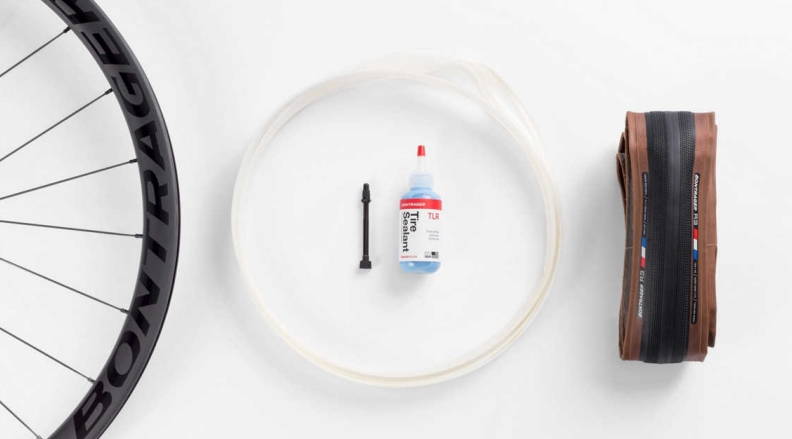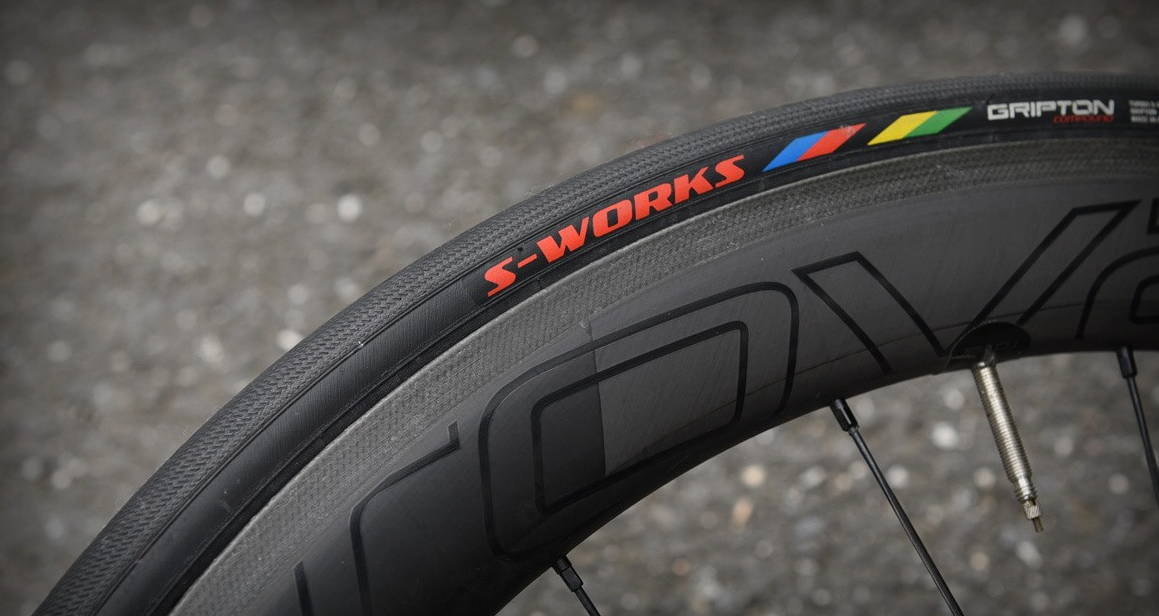
Harper L
Most of us have experienced how the conditions of the pavement or of the surface we ride on can make a huge difference on how comfortable our bike is. One moment we are riding fresh new pavement. So smooth and fast, right? Then we take a turn and suddenly we are in a remote section of the city, the pavement becomes rough and potholes multiply. Not only do we have to navigate through all the obstacles, but the bike starts to shake like crazy and tosses us around, ankylosing our upper body joints and making the ride quite uncomfortable.
Many times, I spoke with someone that wanted to quit road biking because the bike was so uncomfortable the joy they got from riding wasn’t able to overcome the pain. Others are considering buying a different type of road bike to improve their comfort.
However, changing bike type comes with a lot of trade-offs. You can have speed, a light bike, and comfort but you can only pick two. Endurance bikes (or even gravel bikes) are often heavier and less efficient than race bikes, but are more comfortable and more stable on rough terrain. For the casual rider not concerned with speed and efficiency, the improved comfort will outweigh the loss in efficiency. But what if I need that speed? What if I do want the lightest and stiffest bike so I can be as efficient and fast as possible? What if I just love my bike and don’t want to change it?
Don’t worry! There are options to improve comfort on a road bike. Let’s start with the first point of contact and the most common issue: the seat.
SEAT
The seat is the main point of contact with the bike and holds most of our weight. Consequently, if the seat isn’t appropriate for our anatomy, it will hurt!
Most bikes come with generic unisex OEM seats that will fit a majority of riders. However, most riders will eventually change their seat for a more specific one, if not instantly after the purchase of the bike. Seats also age and after years of abuse, they lose their support and they start to sag, thus not supporting the sit bones at the right place. So, don’t be afraid to look for a different seat if you are uncomfortable!
Seats come in a variety of models as wide as the number of cyclists out there. In general, seats are separated into categories according either to the position on the bike (upright to aero) or according to the type of riding (road/city, mtb/off road, triathlon/time trial). Then, the type of saddle is chosen according to the rider’s flexibility, and finally the width of the saddle is chosen according to the rider’s sit bones (bones onto which we are seated) width. For instance, the PRO Saddle Selector allows a cyclist to find the right saddle in a matter of minutes with a few easy questions.
Now there are many brands of saddles, and each have their own ways of recommending a seat. A good start to finding a good seat is to narrow the search:
Type Of Riding > Position On The Bike > Flexible Or Not Flexible > Sit Bone Width > Try It Out!
It is important to point out that your friend’s favourite saddle might be your least favourite! Keep in mind that all bums are different. Also, statistically speaking, females have wider hips and larger sit bone distance than males. Therefore, females will require larger seats (often very tall males also require larger seats). This is why usually, seats coming on men’s bikes will have a width between 140 mm and 145 mm, but women’s bikes will have 150 mm to 155 mm,
Additionally, another important feature on a saddle is the cut out (the opening). Typically, riders suffering from pressure and numbness in the soft tissues of the crotch area will benefit from a cut out seat. A lot of women will be more comfortable with a larger opening, often men don’t require a cut out, but again: everyone is different.
So, an important detail to add to your search for a new seat is to locate the pain/discomfort:
“Fear” pain > choose a seat with a different width
“Front” pain > choose a seat with an opening/cut out
There are also saddles specialized in certain anatomical affections, such as post-prostate operation, coccyx problems, etc.
Finally, saddles have different levels of cushion that can improve the comfort of the ride. Oftentimes higher end seats or racing seats will have little padding and will be on the stiff side. Some will love it, some won’t. Certain brands, such as Selle Italia or Selle SMP, to name only a few, have very performant saddles in different levels of cushion and offer very soft seats with thick padding. Now be careful! The thicker the padding is NOT equal to better comfort. If the seat is not the right for you, a thicker padding won’t solve the issue because your sit bones won’t be supported properly; you would only be burying the problem “deeper”.
If you even want to go in full racing mode with your seat choice, you can also look into the Specialized Mirror or the Fizik Adaptative saddles. These seats are revolutionizing the saddle market with their 3D printed polymer construction (also revolutionizing the price scale!). Instead of traditional foam, these seats are 100% constructed with a polymer scaffold which serves as cushion and vibration absorption, and a carbon base. While still out of reach of most riders, these saddles are just the beginning of customizable and performant bike equipment.

Different saddles for different riders
CARBON SEAT POST
If your saddle is comfortable but you are getting stiff during a ride because of all the shaking, there is something that can be done to improve your comfort and dampen all those vibrations.
First, if your seat post is alloy, consider changing for a carbon seat post. Carbon, as a material, absorbs A LOT of vibrations and can be designed to swing and flex to dampen impacts. In the contrary, alluminium is very stiff and tends to conduct vibrations. Even if the frame is alloy, changing to a carbon seat post is very effective in reducing the discomfort due to the road conditions.
Finally, if you already have a carbon seat post, you can look into seat post specifically designed for extreme vibration dampening and impact absorption like the Ergon CF3 seat post. This seat post is made from 2 independent carbon leaves joined via bushings at the clamp so that they can flex backwards to neutralize impacts.
BIKE SHORTS
The last topic for the main point of contact is the bike shorts. Not only bike shorts improve the comfort at the sit bones, but they also prevent chafing (skin irritation), are very breathable, and can give muscle support.
The best quality of a bike short is its chamois (the pad). Lower end shorts will have a very generic foam chamois and will offer little muscle support while they still provide breathability and less chafing when pedaling. Higher end shorts, however, will have a chamois with a higher foam density at the sit bones and gradually decreasing density outwards. This allows a good blood flow in the crotch area (very important!) and better vibration dampening during the ride. Additionally, high end shorts have an anatomical cut and support your thigh muscles, increasing blood flow during the effort.
Shorts also come in different models and types, and again: your friend’s favourite brand might not be yours! Most shorts come in plain “shorts” type, but high-end ones will be “bibs”. Bibs are not supported by a thick elastic at the waist but by straps that go over the shoulders. Bibs are generally more comfortable because they don’t squeeze the hips, and they even offer a flattering shape as you can tuck everything in.
In addition to your new pair of good shorts/bib, if you find that you still lack a little bit of comfort, that you’re feeling hot and irritated after a ride, try anti-chafe creams, or chamois cream. These skin products (like Chamois Butt’r cream, Muc-Off Luxury Chamois Cream, or Assos Chamois Crème for example) are absolutely great at reducing irritation due to countless pedal strokes, dispersing humidity, and keeping your skin hydrated. If you plan a long day on the saddle, think about carrying a little extra chamois cream to apply later when you feel that your skin is starting to feel sore. Chamois Butt’r and Assos creams come in women’s version as well with a neutral pH to better suit women’s anatomy and natural chemistry.
WHEELS
The next component on the bike that can make a HUGE difference on comfort are the wheels, the easiest change being in the tires.
Tire Pressure
The easiest way to drastically improve comfort on your road bike is by lowering the tire pressure. Now you might wonder that lowering the tire pressure will decrease efficiency and increase energy loss. However, this is only true on a perfect surface such as an indoor cycling ring.
Increasing tire pressure does increase efficiency, but past a certain point, the tire will be so hard that it will vibrate excessively from the imperfections of the road (and we know they are bad in certain parts of the world!). Not only the vibrations decrease comfort significantly, they also waste a lot of energy. Therefore, pumping your tires to the max is not the best course of action, especially if you are in the lightweight group.
In general, a tire pressure around 100 PSI is sufficient and will also prevent flats (be wary of not letting your tire pressure decrease below the recommended minimum). If you weigh less than about 130 pounds, you can even decrease the pressure to 90 PSI. however, if you are heavier than 160 pounds, you should increase the pressure. Pro tip if you are still exploring tire pressures: since it is easier to remove pressure than re-inflate during a ride, it is good practice to put a little bit more air in the tires. Then, as you ride, if you notice the bike is shaking too much and uncomfortable, you can remove a little bit of air until you reach your comfort level. Remember that tires naturally loose air over the course of the day so that you should verify your tire pressure before every ride, else you increase the risk of getting pinch flats and you will be dragging because of the low pressure.

There are many tire options and gadgets to help improve comfort. Lowering the pressure is the easiest alternative.
If you are a precision enthusiast, you should try the SRAM TyreWiz. This little gadget is installed on the valve and sends pressure data directly to your phone. The app will then display recommendations on pressure according to the current ride conditions, allowing you to find the perfect tire pressure for you and your ride!
Most of the times you will find that your comfort is improved even more by having a slightly lower pressure in the front tire since most of the weight is supported by the rear wheel.
If comfort is still not optimal with a lower pressure, other options can be tried. If your wheels are compatible, you can convert your tires to tubeless or you can try wider tires.
Tubeless Tire
After talking about tire pressure, it makes sense to mention tubeless tires. Tubeless tires are already mainstream in mountain bikes, and they are becoming more and more frequent in road bikes and commuter bikes.
With tubeless tires, inner tubes are replaced by a sealant that, in case of a small puncture, will seal the hole and the ride can continue. Bonus: since road tires are quite small, the amount of sealant is significantly lighter than a tube, so you are even saving on weight!
The main advantage of tubeless tires, apart from being light and self-sealing, is the ability to run even LOWER pressure than with a tube, because the risk of pinch flats is cancelled! Therefore, a 130-150 pound rider could use only 80 PSI in their 25 mm tires, keep the same rolling resistance and improve comfort. It’s great!

Typical tubeless setups require a tubeless compatible (TLC) rim, a special rim tape, and a TLC tire
However, tubeless tires are more maintenance intensive than the regular tube setup. Sealant must be added at least every year as it dries out naturally, larger punctures will result in a flat, and it is messy when you need to repair it. Also, some rim-tire combination just won’t seal properly, so it can be difficult to convert a wheelset to tubeless. While these are important things to keep in mind, if you are careful about setting the right pressure in your tires and that you don’t ride on glass on purpose, tubeless tires are a great option to improve comfort and make your bike lighter and faster.
Tire Width
The last option not requiring investing too much is to switch to wider tires. Most modern road bikes now only come with disc brakes, which gives clearance for larger tires since brake calipers aren’t limiting anymore. Thus, most road bikes will be designed for larger tires and will come equipped with stock 28 mm tires.
A larger tire means a larger volume. Some will remember from high school science that (Boyle’s law), which translates to: larger volume = lower pressure. Not only a larger volume will decrease your chance of getting pinch flats, but it will also significantly dampen more vibrations than skinnier tires.
However, the trade-off is that wider tires can feel sluggish when cornering if they are too soft. On a narrow rim, a wide tire can give in a little bit more than narrow tires, which makes the bike feel like it’s losing traction. While it is still safe, some rides might not like the feeling of it. Additionally, larger tires are indeed heavier. So, if you are more efficiency and lightweight oriented, switching to wider tires shouldn’t be your first option and you should instead consider tubeless tires first.
Nevertheless, if you like the feeling of 28 mm tires but want to cut some weight, do consider tubeless 28 mm tires to get the best of both worlds!
Tire Type
Now we have been talking about pressure, tubeless, and width, but what about QUALITY? Does a cheap tire perform as well as an expensive tire? Absolutely not.

S-WORKS also means the most expensive equipment at Specialized. However, holy guacamole these are FAST!
Cheap tires will have wire beads and, while they will certainly do the job, they are heavier and stiffer than higher-end tires. The weight is mainly due to a thicker casing and the wire bead. High-end tires have flexible synthetic beads, which is much lighter. As mentioned, cheaper tires are stiffer, which means that they will not absorb vibrations as well as a flexible tire. They will tend to make the ride feel bumpy and rough, which is definitely not comfortable for the lower back nor the wrists!
Also, the flexible and soft rubber of high-end tires such as the S-WORKS Turbo provides tons of traction and allows the rider to really feel the wheels against the pavement; perfect for large accelerations and cornering.
Wheel Set
Finally, the last resort to increase comfort of a road bike would be to completely change wheelset for a wider rim. This option of course requires a larger investment from the rider, but has significant potential to improve comfort.
Why wider rims? Because wider rims allow you to keep those lightweight and fast 25 mm tires but to run them at a lower pressure since they will now have the same volume as a 28 mm tire. Most regular road wheels will have an inner width of about 18 mm, but now you can find road specific wheels with an inner width of 21 mm. they will effectively make the 25 mm tires wider just like a 28 mm would be on a regular wheel, providing comfort but keeping it lightweight. For road bikes with rim brakes, this could prove harder to do as the rim will now take more space between the brake pads and might affect the feeling of the brakes.
For those looking for speed and lightweight, carbon wheels can even be considered at this point. As mentioned earlier, carbon has the ability to absorb more vibration than alloy. However, one must be careful when choosing a carbon wheel as they can be extremely stiff, which boosts efficiency and accelerations, but decreases comfort. The more dish a wheel has, usually the stiffer they are. Some brands are also known to be stiffer than others, and there are again rider preferences. So, to best improve your comfort when buying a new set of wheels, consider a 21 mm inner width and shallow rims.
While comfort can significantly be improved by lowering air pressure and selecting better tires, other steps can be done to reduce the stress from the road.
HANDLEBARS
The handlebars is the second main point of contact with the bike. If it is not set properly, it has a big influence on comfort.
The easiest and cheapest alternative to improve comfort if hands or wrists hurt is to install a thicker handlebar tape (bar tape for short). Thicker bar tape will increase the outer diameter, but will absorb a lot more vibration. While regular foam tape can help, improved polymer bar tapes such as the Lizard Skins DSP Bar Tape are insanely comfortable. They are on the expensive side, but once you try such a bar tape, you can never go back. The polymer is soft, almost feels like a gel, and absorbs a lot of vibration even in its thinner version. For rougher roads, the thicker version is strongly recommended.
Another option to improve comfort even more is to add gel pads underneath the bar tape. The gel pads will provide a better rest for the hands while not increasing the whole diameter of the handlebars. It’s the same idea as an ergonomic grip for a straight handlebar.

Thicker and softer bar tape has a good potential of increasing comfort and decreasing wrist pain. Carbon handlebars absorb more vibrations than alloy and come in various shape which can help increasing comfort.
Now a solid alternative to decrease vibrations and wrist ankylosis (stiffness of the joint) is to install a carbon handlebar for the same arguments as previously. Additionally, carbon handlebars come in a wider variety of shapes than alloy bars, and a handlebar with flat surfaces (above, center) is very comfortable and ergonomic. The flat portion allows to rest the hands and better distribute the weight over a larger surface, decreasing the stress in the joints.
A lot of people are also using padded gloves to absorb even more vibrations (and perspiration).
BIKE SHOES
Finally, the last point of contact with the bike is, of course, the feet. They are easily to overlook, but not only can our feet make us uncomfortable, they can significantly decrease our efficiency if not properly equipped.
A shaky ride is quick to make one feel uncomfortable on a bike, especially if the shoes are too soft. A stiffer shoe doesn’t bend and allows for – a better power transmission, yes – but mostly prevents muscle fatigue in the foot from compensating for the flex in the sole. In other words, if the sole is too soft, we are unconsciously activating many muscles in our feet to prevent it from flexing when pushing on the pedal. Over time, muscles tire and can give a burning sensation in the foot. To solve this problem, seek a stiffer sole, preferably a carbon sole.
Another quick thing that can improve comfort is an arch support, especially if you know your feet tend to collapse when walking or standing.
BIKE FIT
To round this up, comfort can be improved in many ways. However, if you have specific pains or medical conditions, seek a professional bike fit. It is probably one of the best investments when you are not comfortable on the bike and when you don't know what you're doing.
The bike fit professional will assess everything from the saddle height to the shifter position, passing by the position of your cleats. Before completely changing bikes or quitting this most beautiful sport, visit your local bike shop and ask about professional bike fits. It’s definitely worth it!
